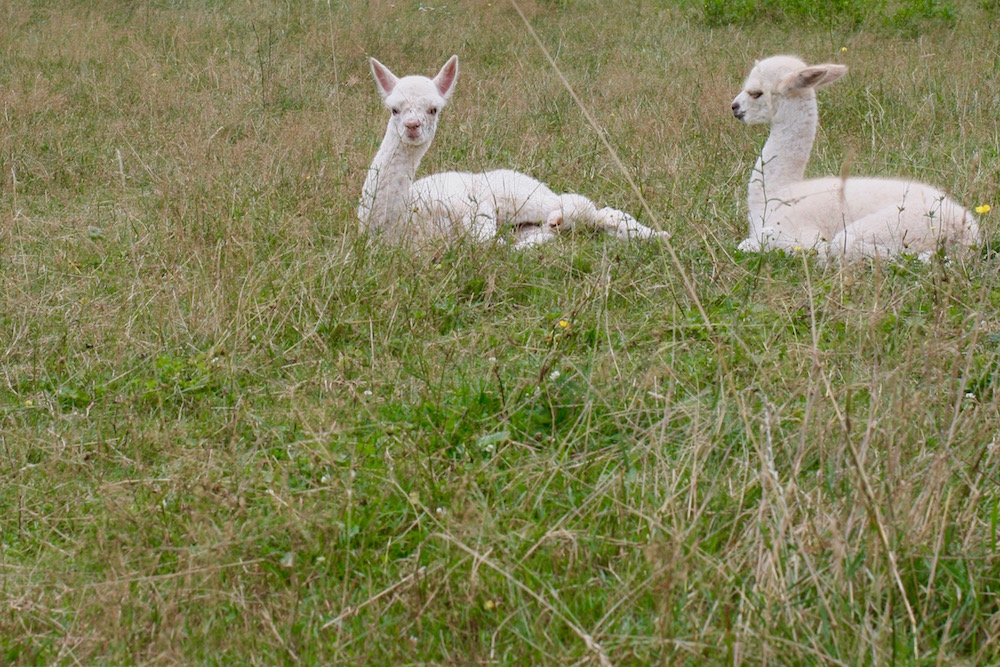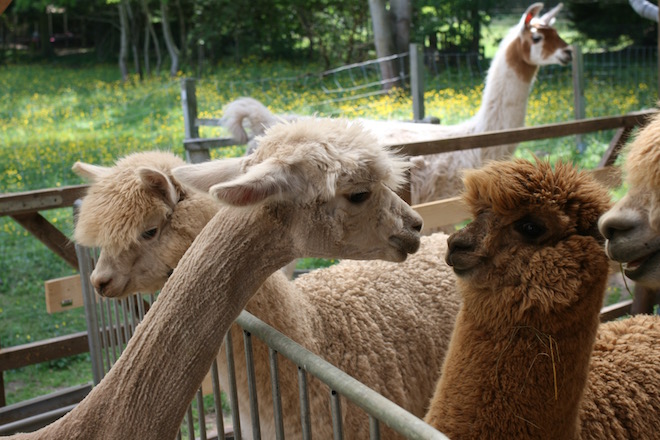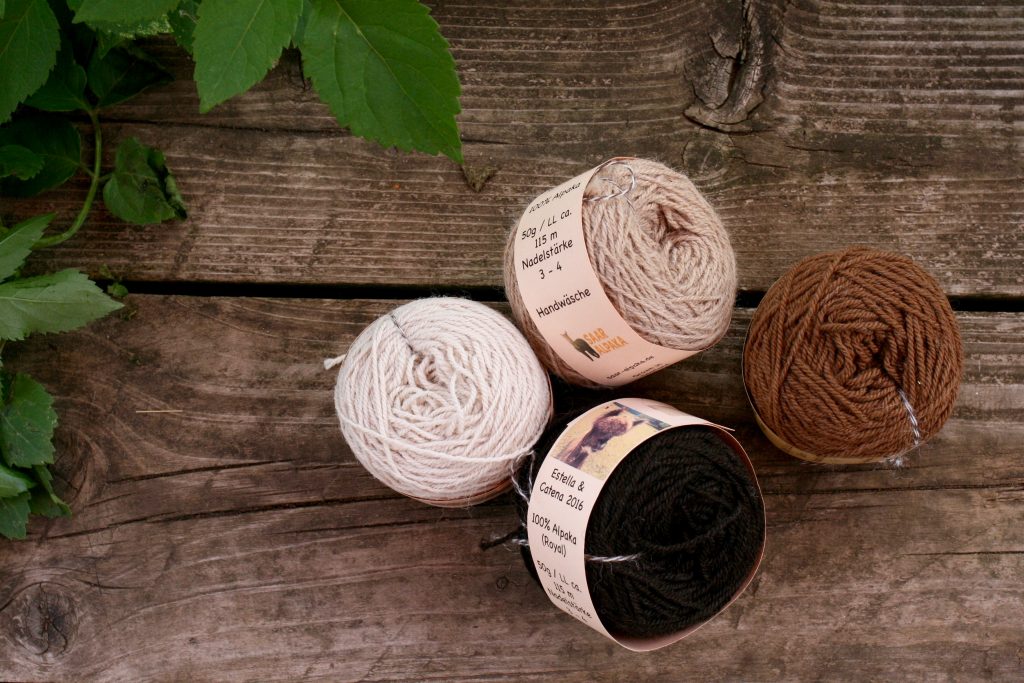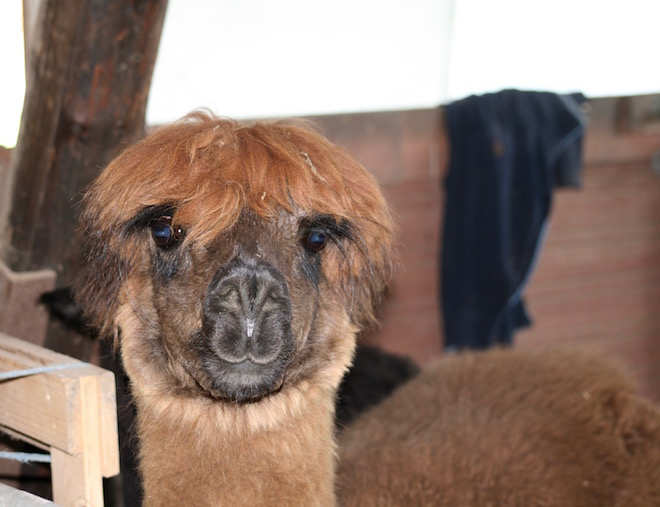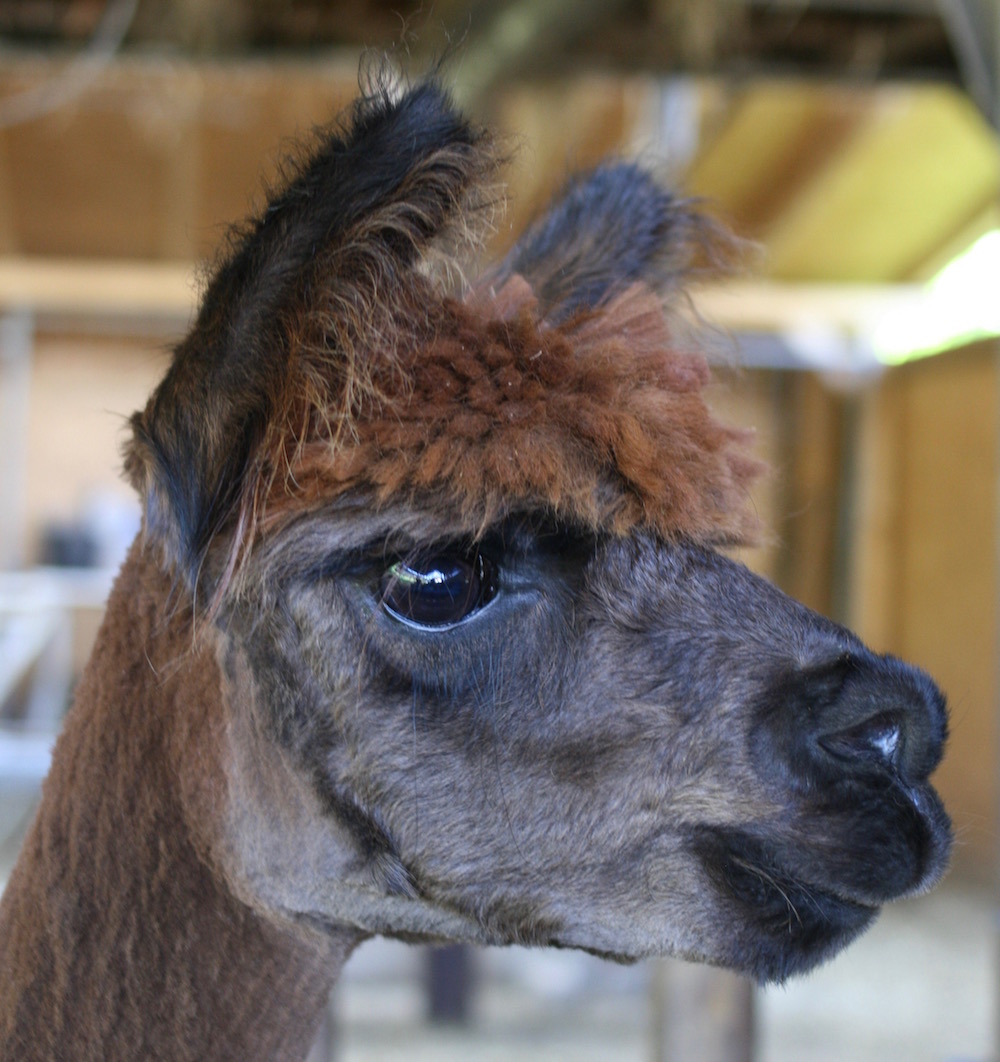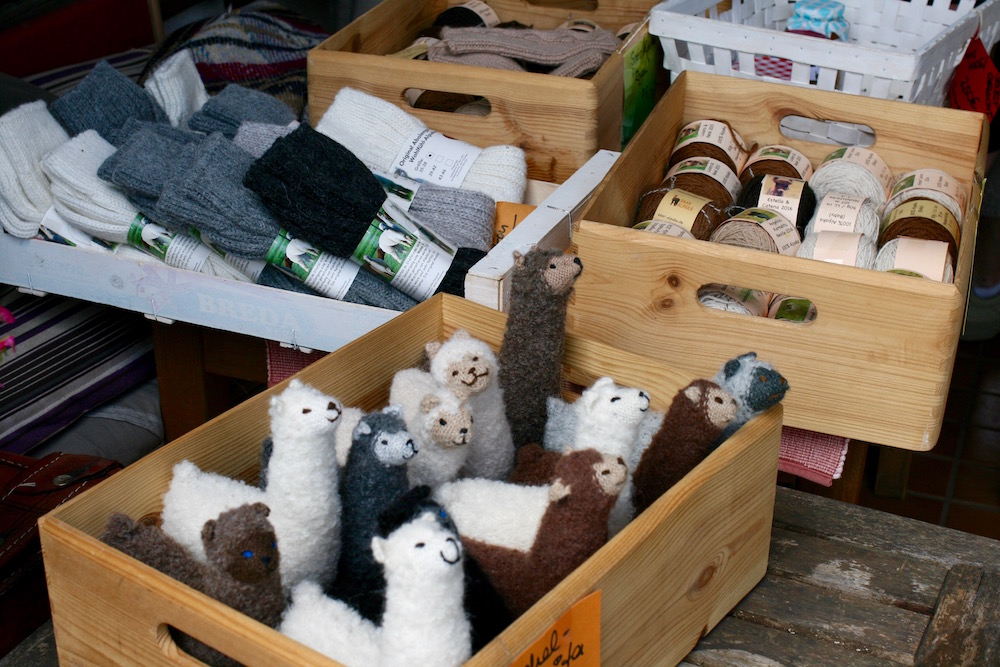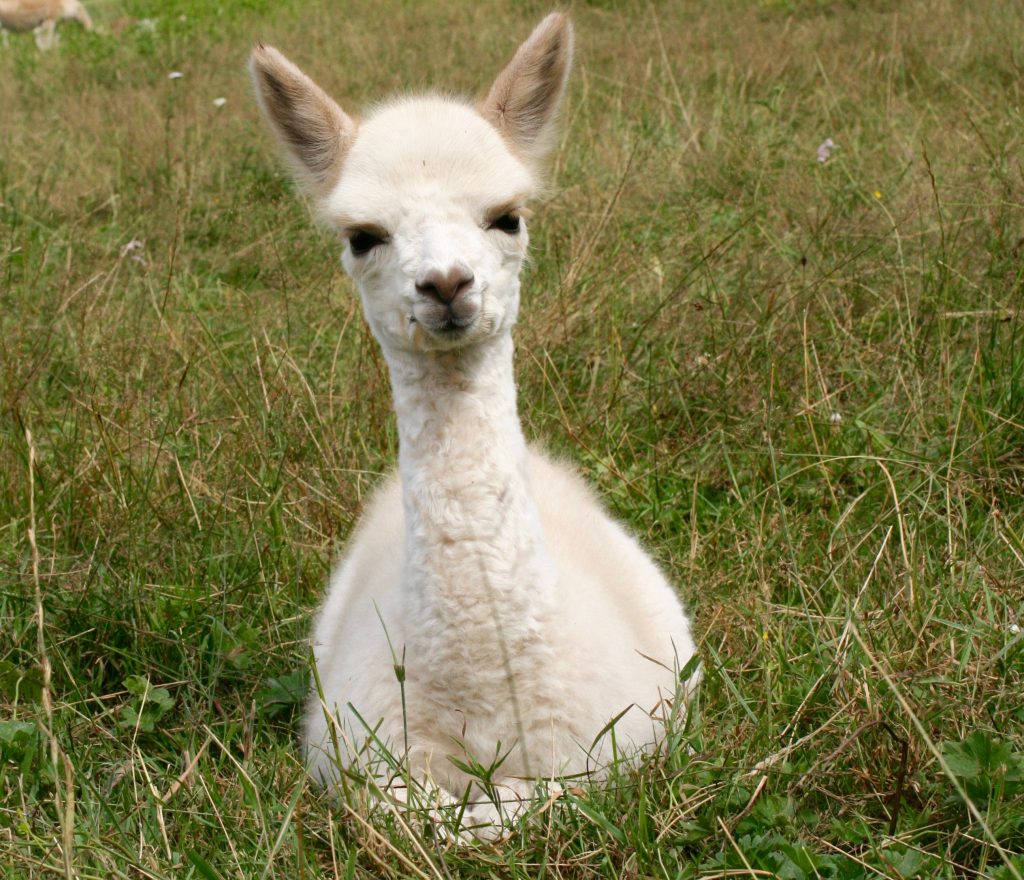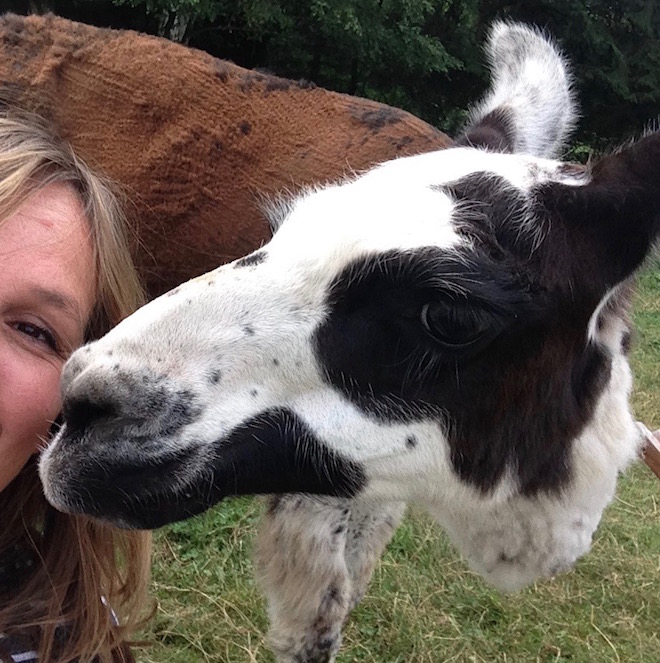Imagine a walk along a breezy beach in late spring, wind and waves. Or a chillier summer evening outside. This is what I had in mind when I designed Summer Breeze shawl.
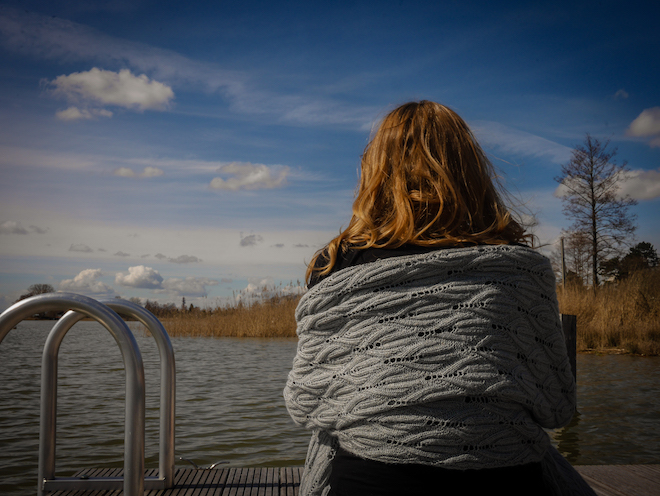
Therefore, I absolutely wanted to take the illustrating pictures for the pattern and the blog near water. Etang du Stock is a lake in Lorraine/France, just an hour drive from my home. My friend Michaela, a talented Graphic Designer, photographer (and so much more) thankfully agreed to assist and to model Summer Breeze shawl for me. We had been very lucky, the Saturday before Easter was probably the first sunny spring day here in our region.
So join us! Here are our pictures.
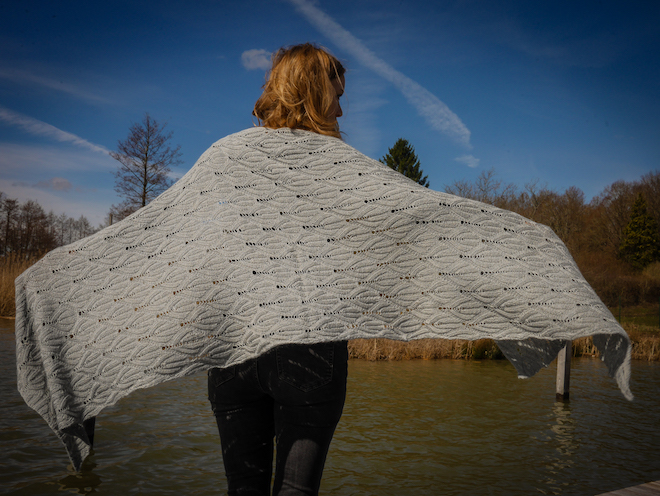 Summer Breeze is a basic minimalistic piece that complements every outfit. I absolutely love it and I am sure it will make me happy for a very long time.
Summer Breeze is a basic minimalistic piece that complements every outfit. I absolutely love it and I am sure it will make me happy for a very long time.
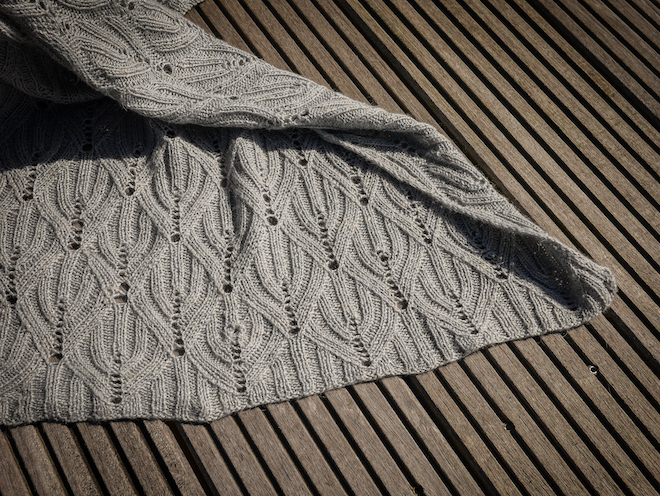 The construction of Summer Breeze is straightforward and rectangular. What I like best: The pattern is reversible. It features a 2/2 ribbing with a lacy centre that looks equally pretty from both sides. This is an important detail for me when knitting a shawl. So, no wrong side here, you can just throw Summer Breeze casually around your shoulders and snuggle in. Borders are worked with a triple selvedge stitch that forms a neat mini i-cord along the side. A most satisfying finish for this simplistic shawl.
The construction of Summer Breeze is straightforward and rectangular. What I like best: The pattern is reversible. It features a 2/2 ribbing with a lacy centre that looks equally pretty from both sides. This is an important detail for me when knitting a shawl. So, no wrong side here, you can just throw Summer Breeze casually around your shoulders and snuggle in. Borders are worked with a triple selvedge stitch that forms a neat mini i-cord along the side. A most satisfying finish for this simplistic shawl. 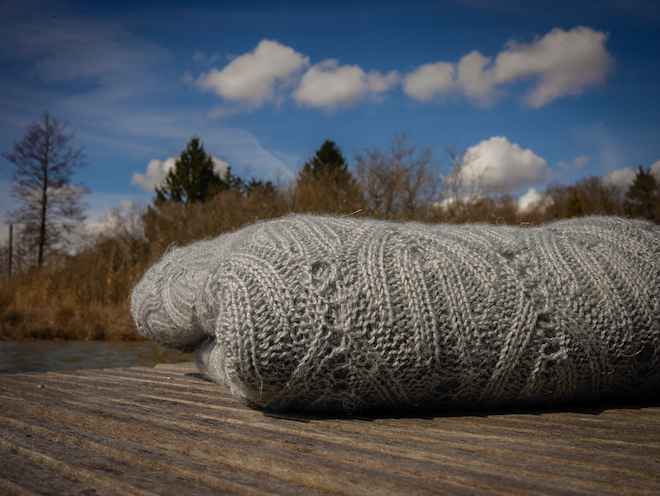
Summer Breeze Shawl: Yarn & Pattern Specs
Summer Breeze shawl was designed for Meadow, a luxurious yarn blend by The Fibre Company. I gladly received the yarn as part of TFC’s great yarn support programme, that encourages self-publishing indie-designers like me to work with their yarn. I was over the moon when I learned that my design was selected and I got the chance to work with this great yarn.
Meadow has everything a shawl needs. It is soft with a little halo because of Merino wool and baby llama (oh, so soft against your skin). The silk has lovely sheen and after blocking it has an incredible drape thanks to the linen.
- Finished dimension: 180 cm (71 inches) x 60 cm (23.5 inches)
- Knit with 3 Skeins of Meadow, The Fibre Company (40% Merino wool, 25% baby llama, 20% silk, 15% linen), 498 m / 545 yds per 100 g hank
- Gauge: 30 x 36 sts = 10 cm (4 inches)
The pattern is available in my Ravelry store.
Michi and I lingered at the dock. We took pictures, enjoyed the sun, the tranquillity, the wind (and the shawl), the mountain tops of the Vosges in the distance. I also dipped my feet in the lake or the very first time this year.
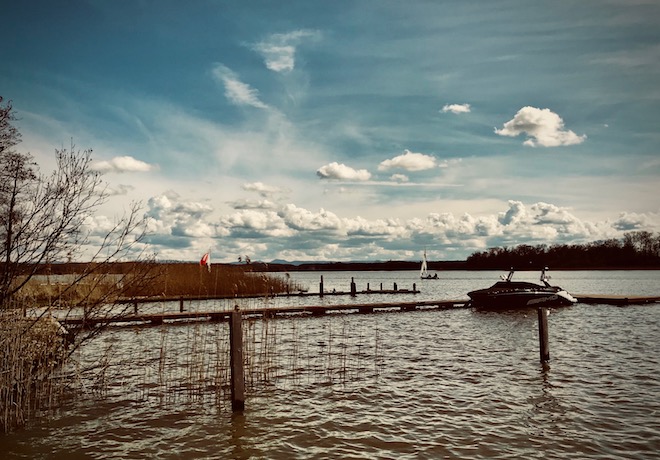
I also managed to knit a few rows.
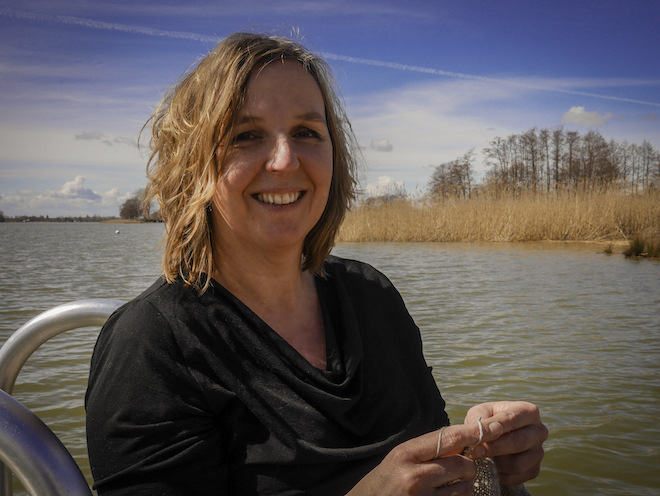
After we parted from the dock, we decided to visit David, who is the owner of Chateau d’Alteville that dates back to the 16th century. If you ever happen to be in the region, make you spend the night! David transformed it into a Bed and Breakfast and kept its ancient charm. You will sleep in style.
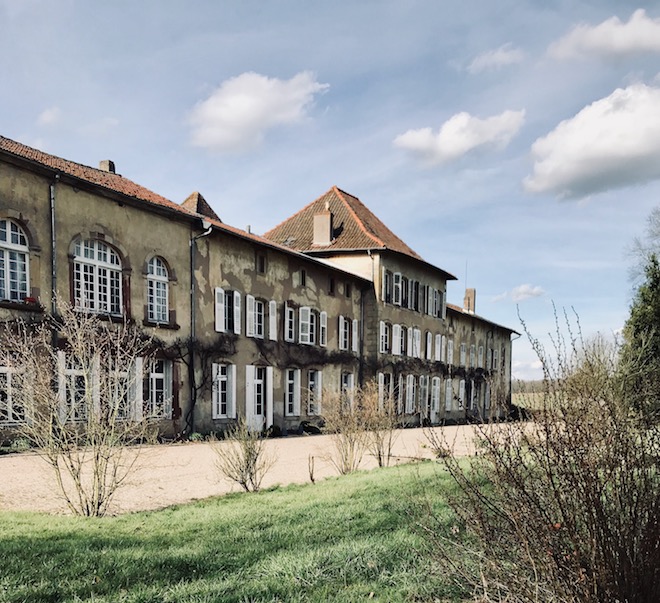

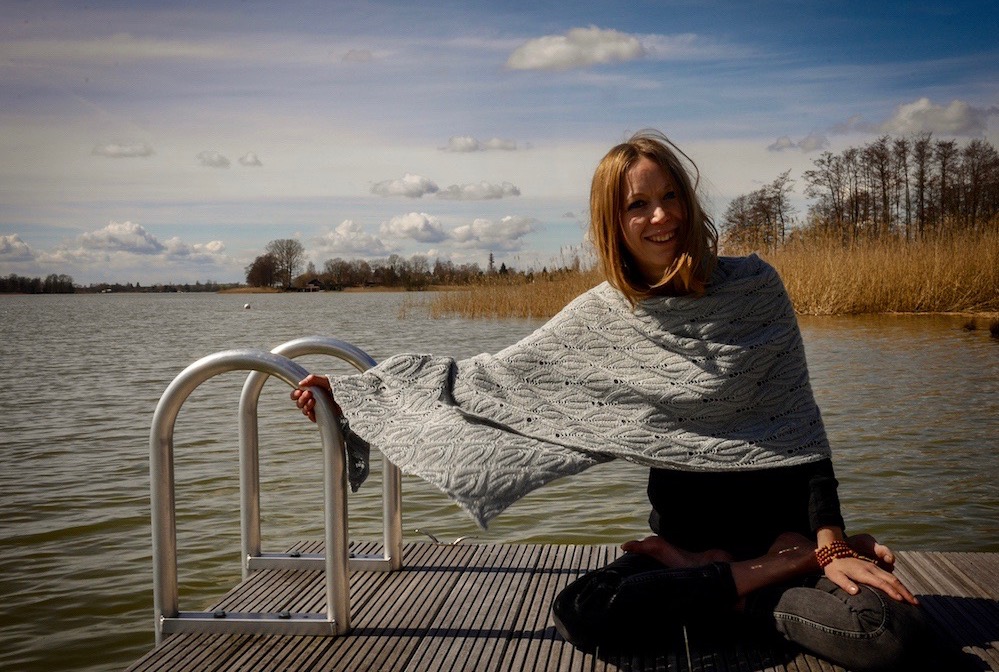
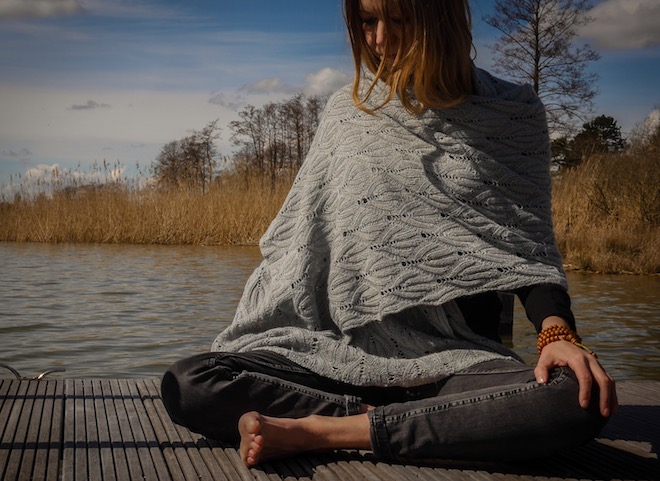
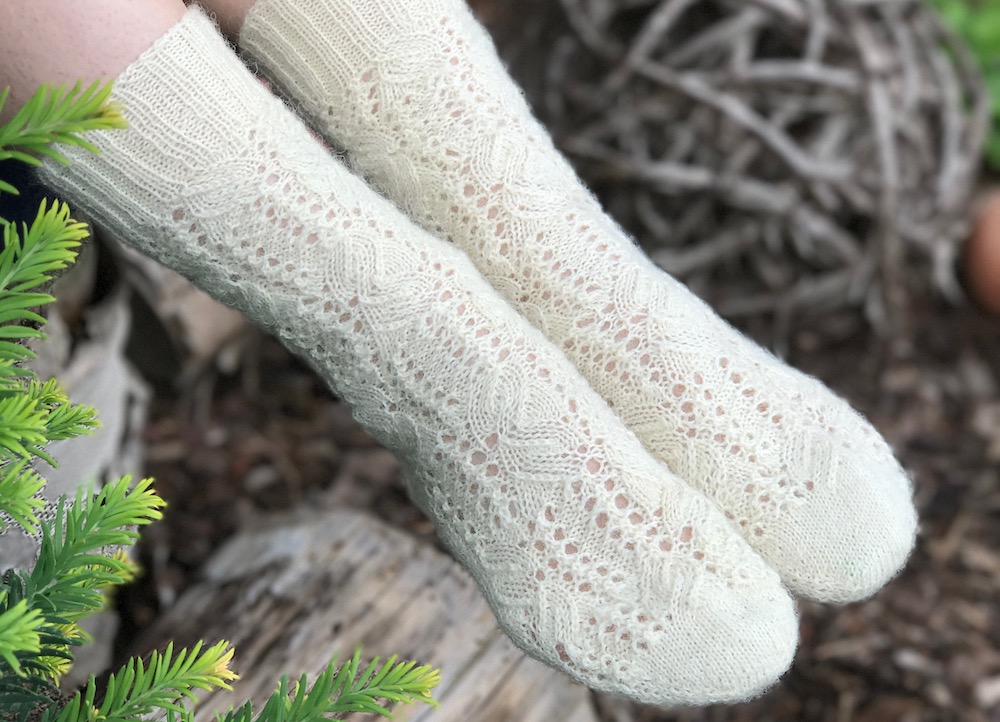
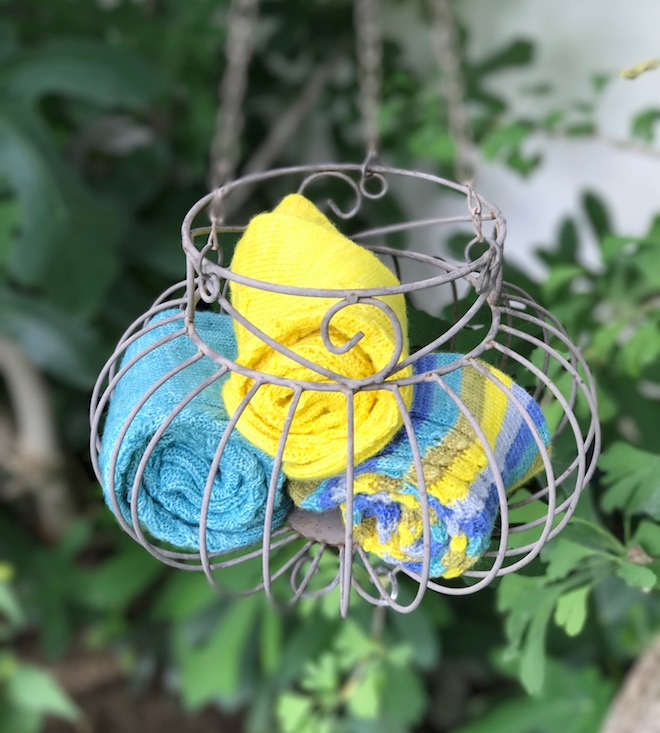
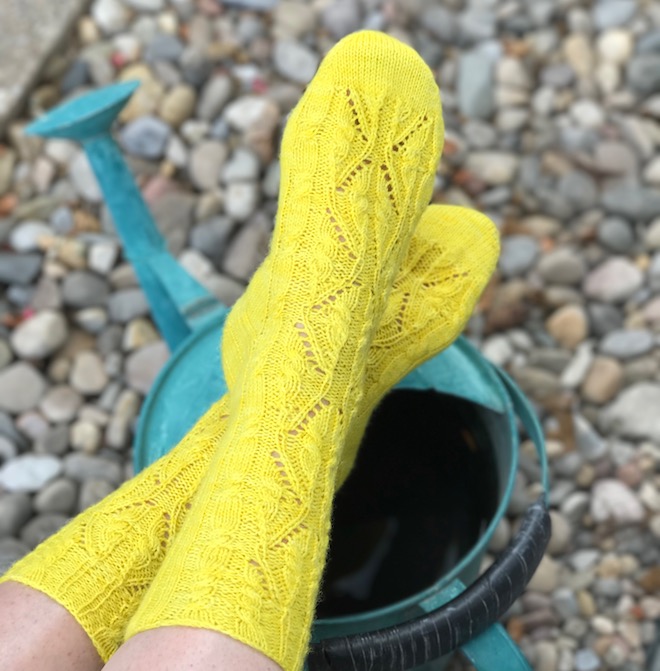
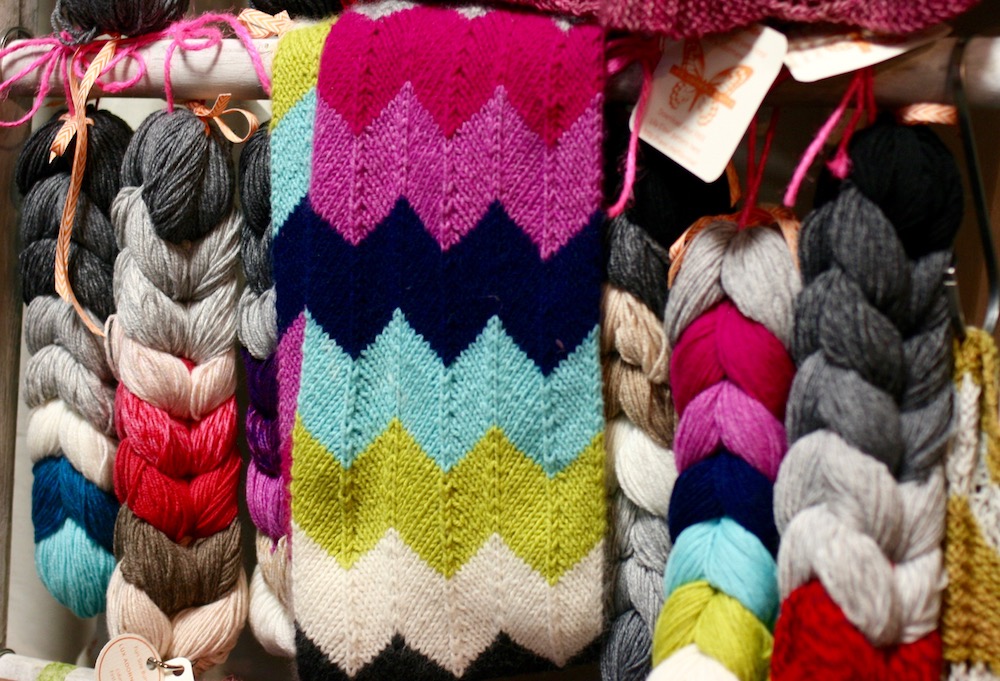
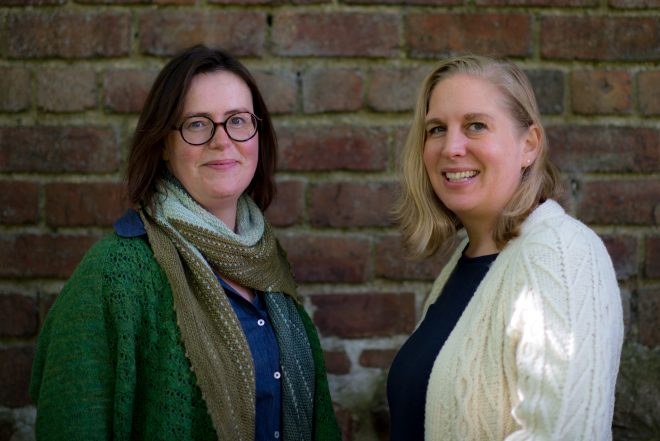

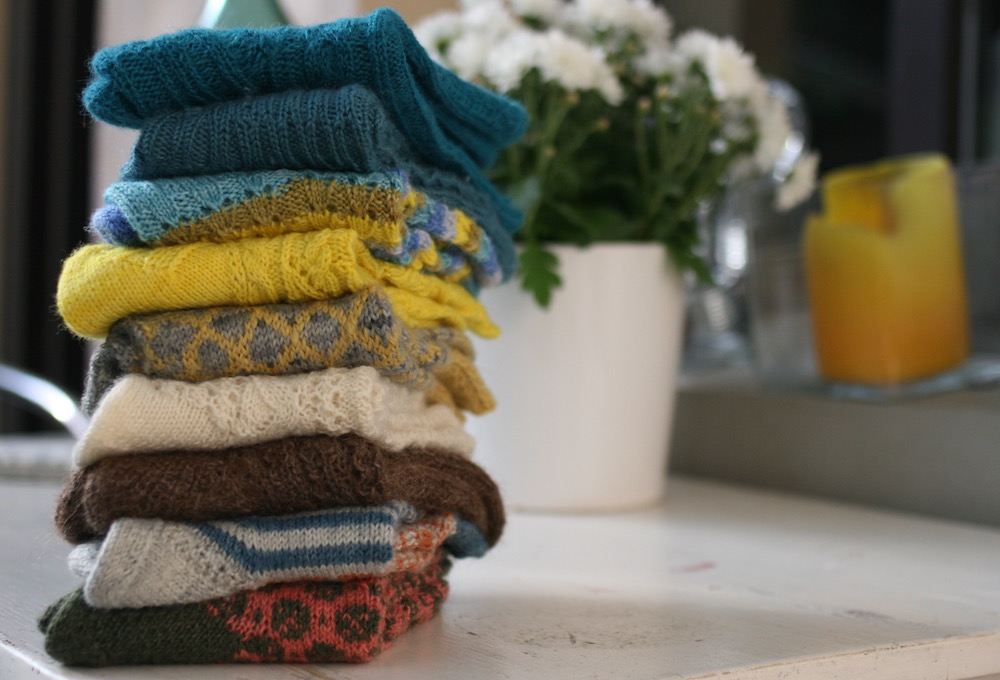
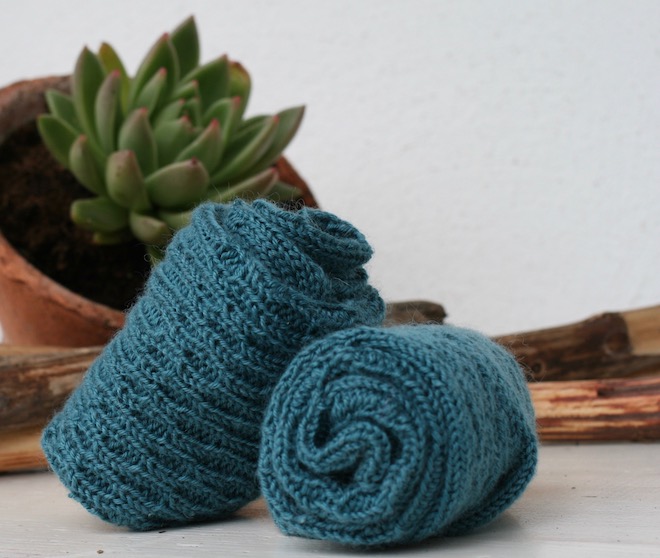 The sock year 2017 started minimalistic: A small, irregular cable meanders over the leg and top of these socks. Voilà:
The sock year 2017 started minimalistic: A small, irregular cable meanders over the leg and top of these socks. Voilà: 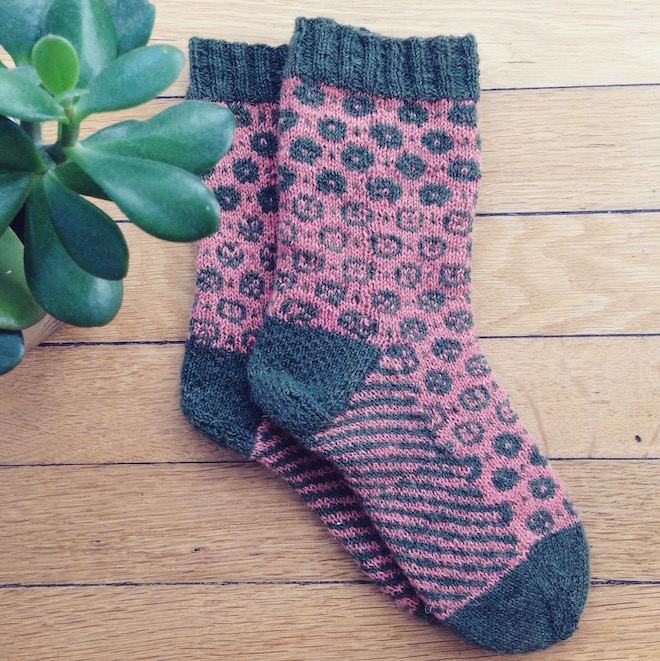
 Then, I tackled my first toe-up sock – a wild knit with cables. Therefore,
Then, I tackled my first toe-up sock – a wild knit with cables. Therefore,  I remember that I got this yellow yarn on a day with dreary weather. The acquisition from my LYS brightened up the day. I took the wip to Edinburgh Yarn Fest, daffodils were blooming everywhere, hence the name.
I remember that I got this yellow yarn on a day with dreary weather. The acquisition from my LYS brightened up the day. I took the wip to Edinburgh Yarn Fest, daffodils were blooming everywhere, hence the name. 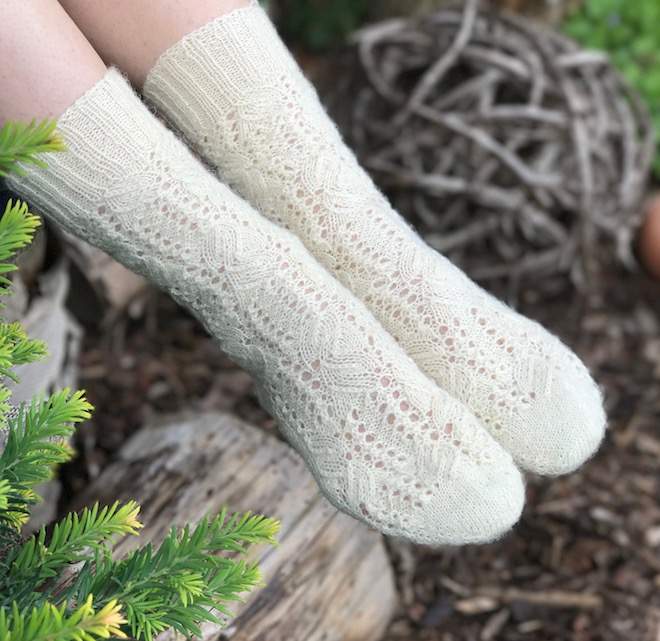 Liliez
Liliez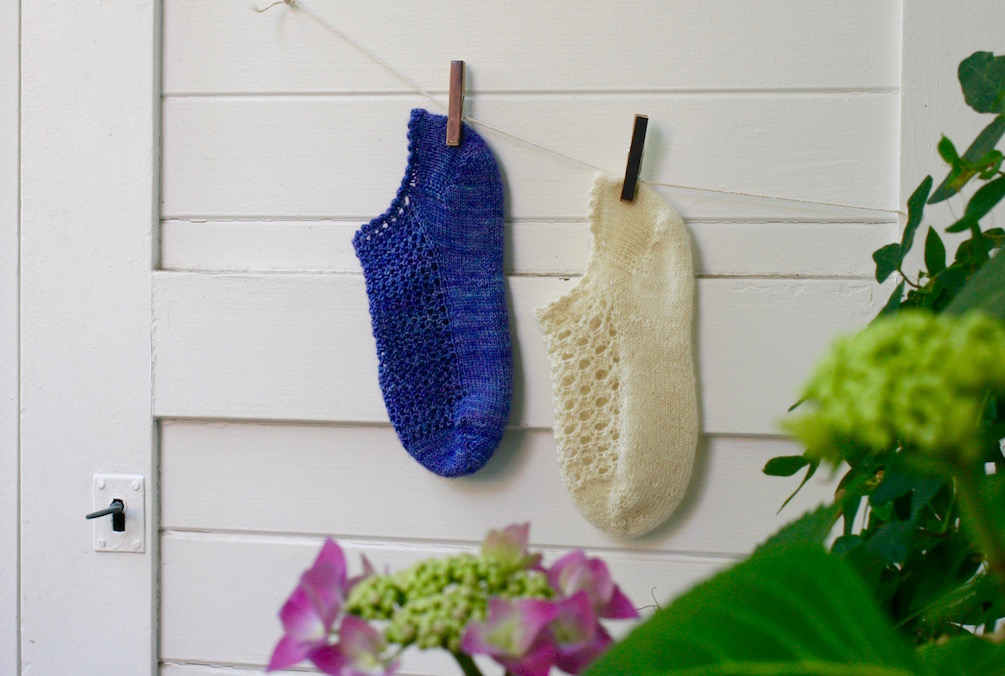 I got lazy in summer, so I shortened the socks ;-).
I got lazy in summer, so I shortened the socks ;-). 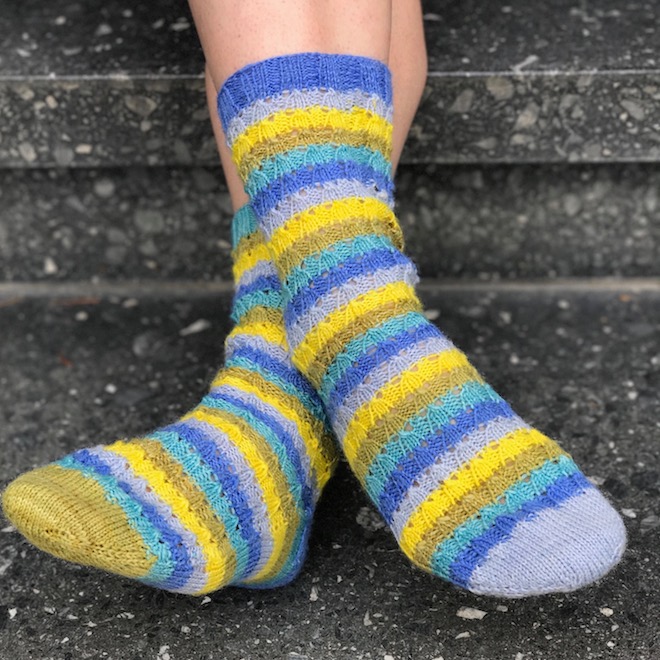 Time to knit up some yarn leftovers. The blue-bell stitch I used for
Time to knit up some yarn leftovers. The blue-bell stitch I used for  When I visited the Alpakas from
When I visited the Alpakas from 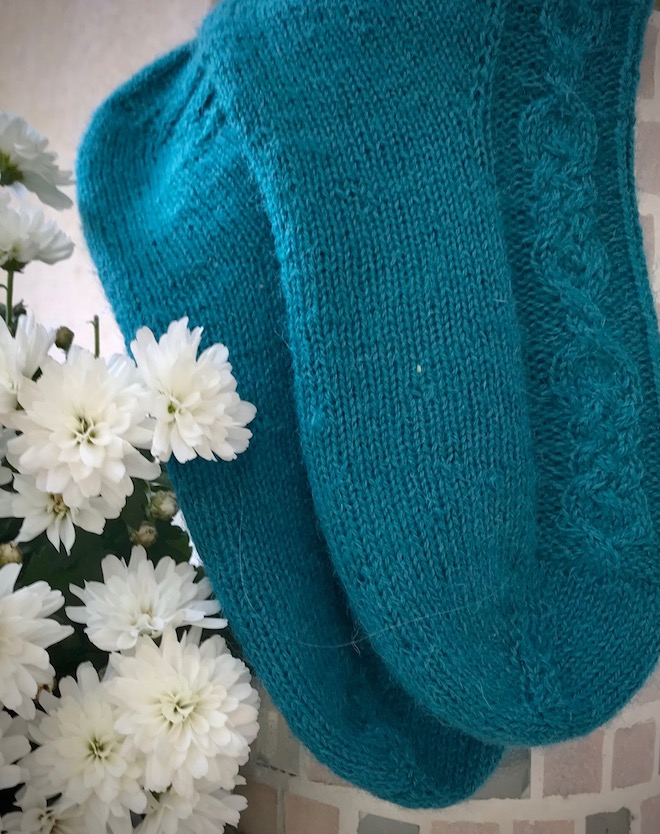 There was still one skein of sock yarn in my stash, namely the 2nd skein of John Arbon’s Exmoor Sock I bought at the Edinburgh Yarn Festival (Above shown Liliez-of-the-Valley are actually knit with the same yarn). So I decided on another cable pattern for
There was still one skein of sock yarn in my stash, namely the 2nd skein of John Arbon’s Exmoor Sock I bought at the Edinburgh Yarn Festival (Above shown Liliez-of-the-Valley are actually knit with the same yarn). So I decided on another cable pattern for 
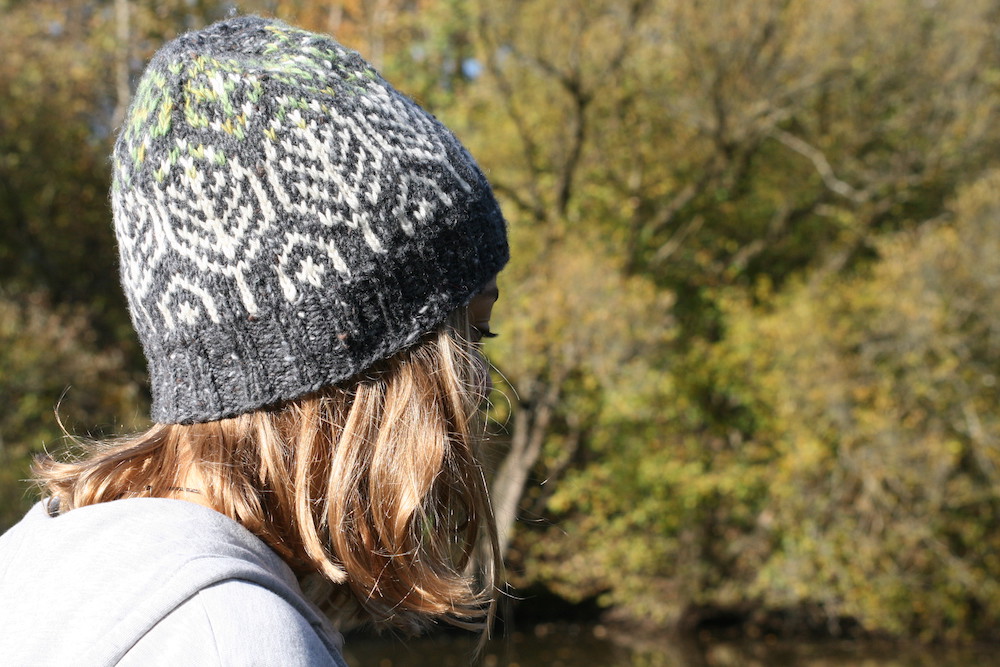
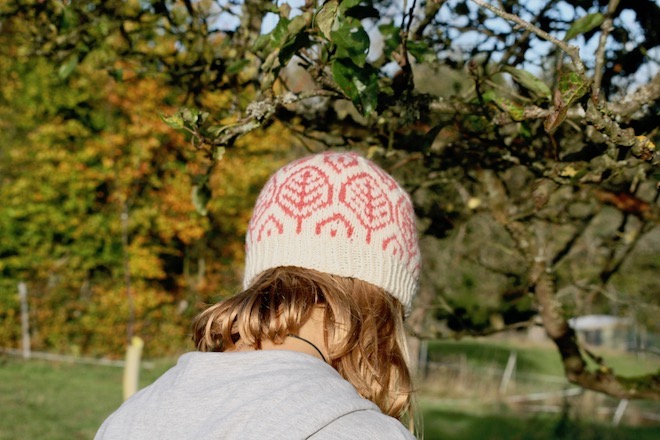
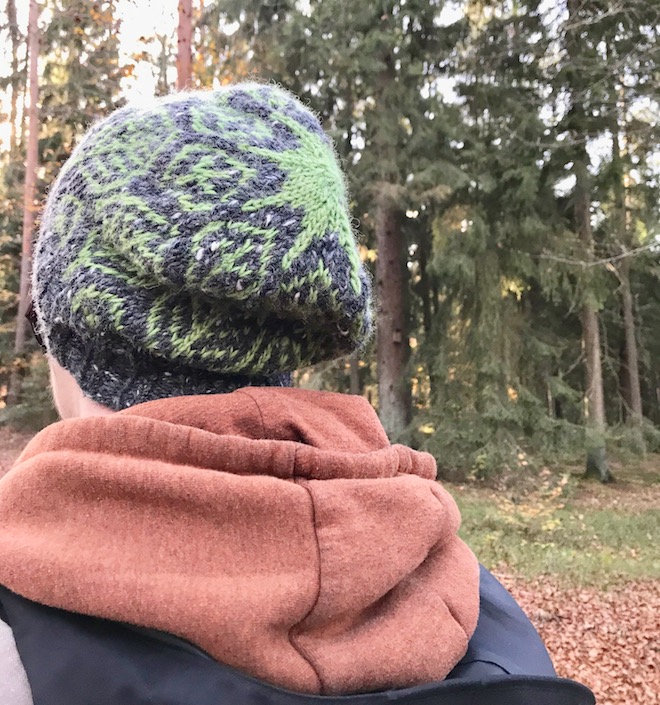
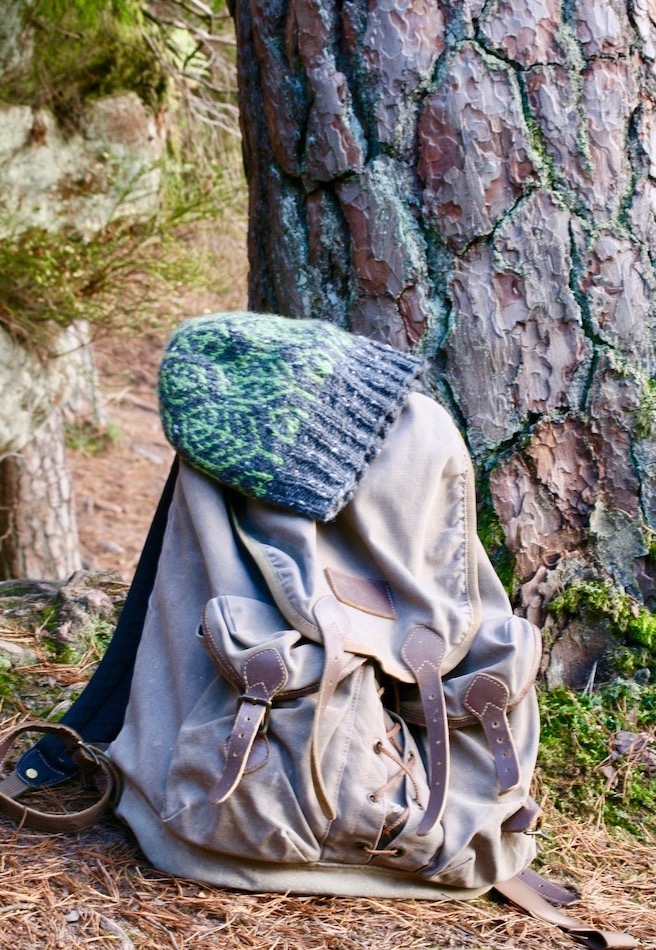
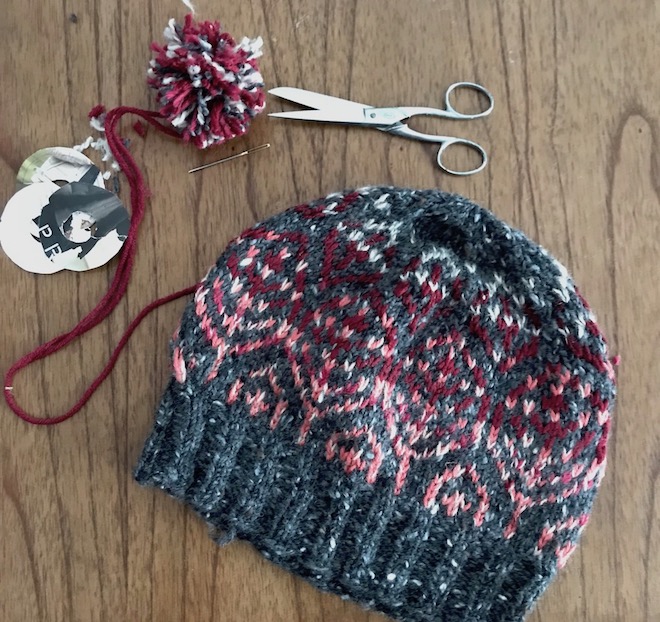
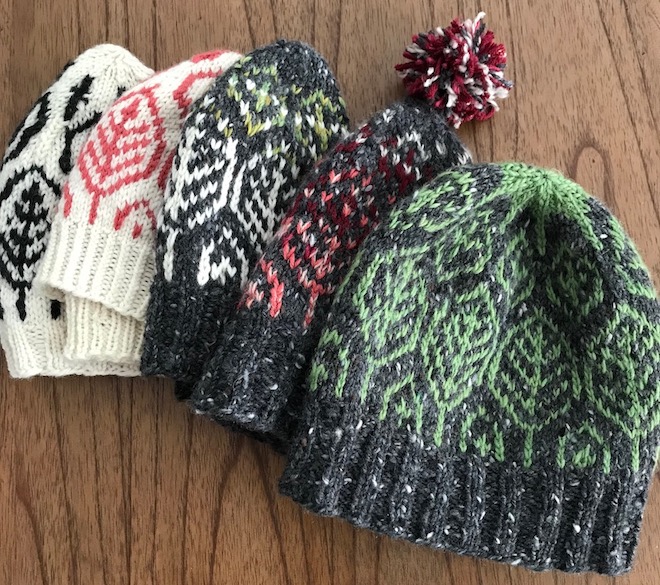





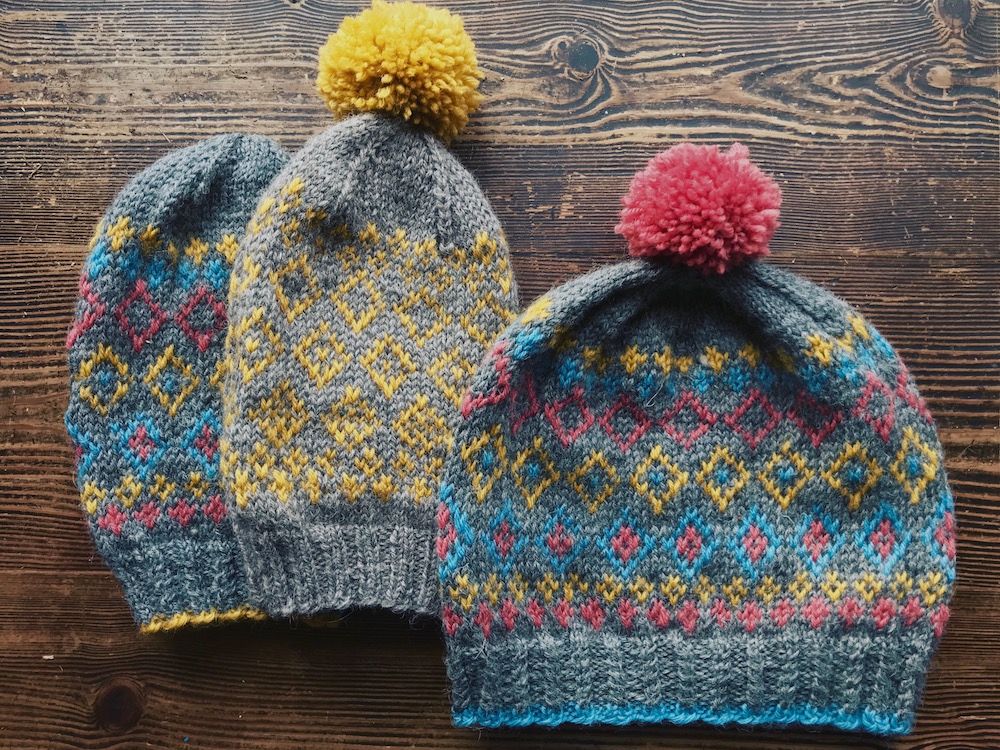

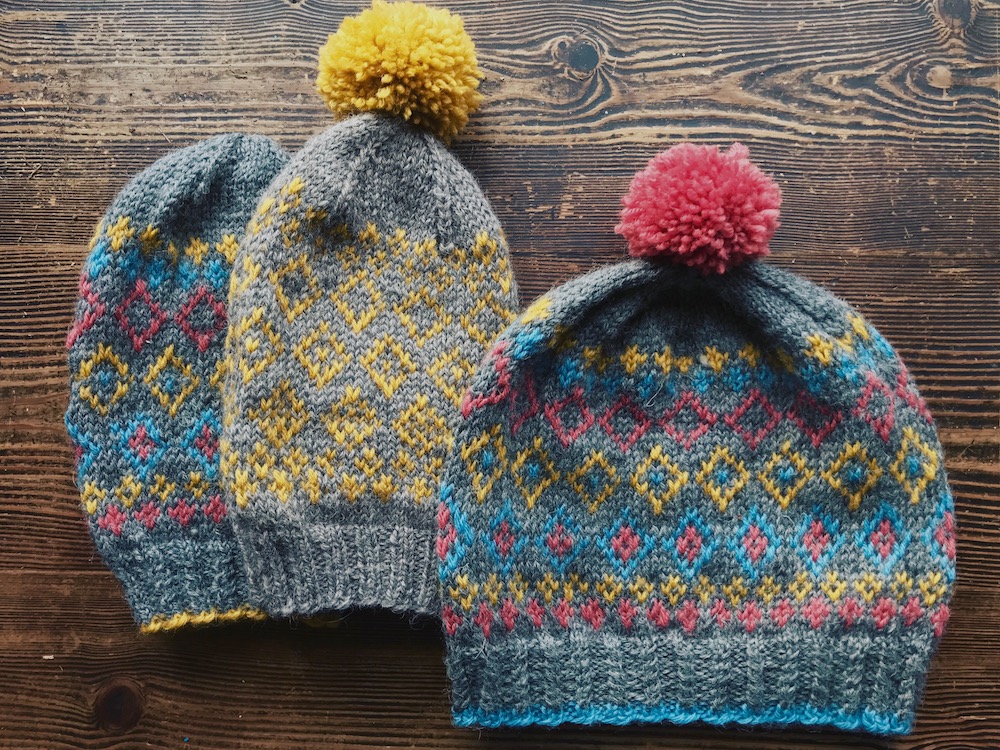
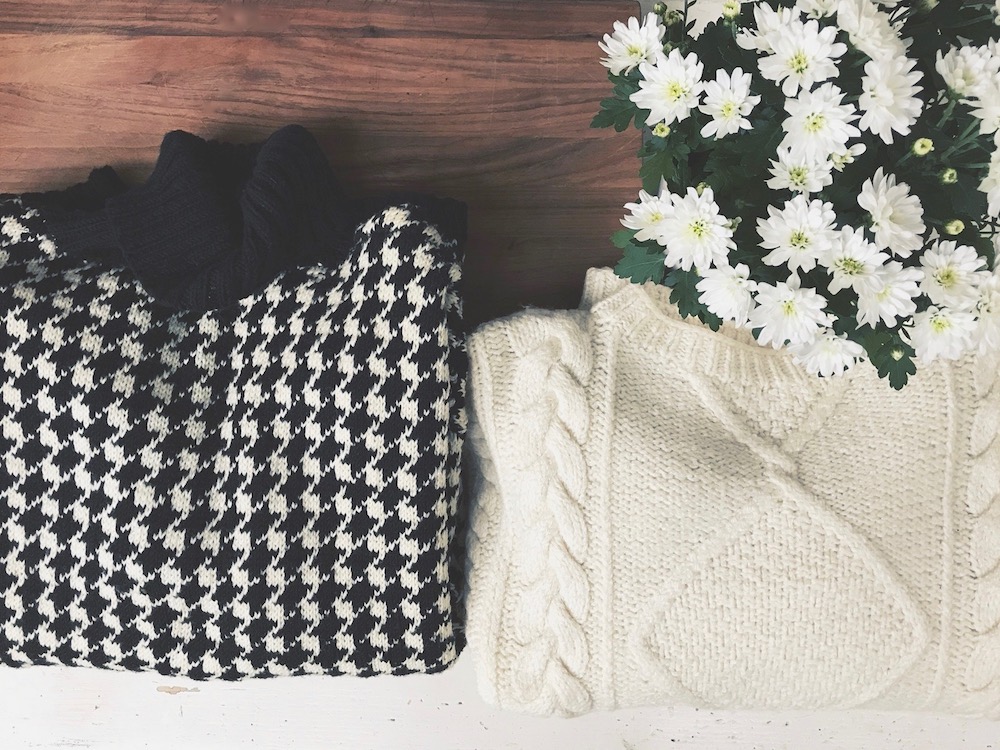
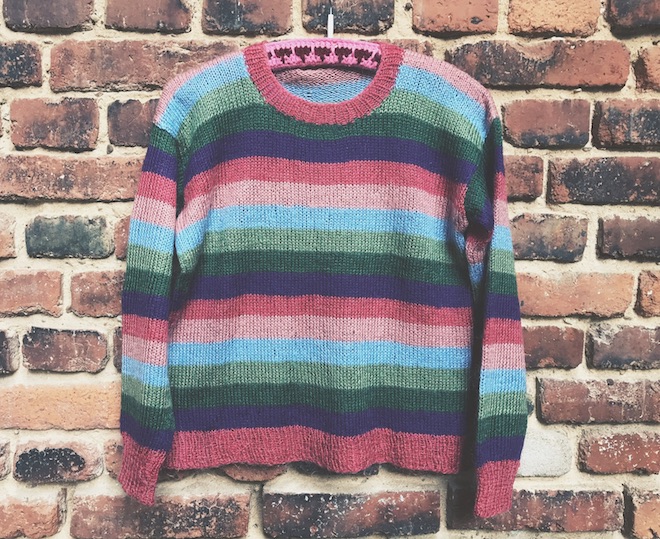 The first I want to show you is a very special one: It is indeed the first sweater I ever knitted. I must have been 15 or so. The yarn is a mohair acrylic blend. It is knit in the round. My mother has tucked the seams, to make it a bit tighter. I remember that she wore it, too. She is a lot smaller than me. Hm, I will try to open the seams, wash and block it. I might want to wear this one.
The first I want to show you is a very special one: It is indeed the first sweater I ever knitted. I must have been 15 or so. The yarn is a mohair acrylic blend. It is knit in the round. My mother has tucked the seams, to make it a bit tighter. I remember that she wore it, too. She is a lot smaller than me. Hm, I will try to open the seams, wash and block it. I might want to wear this one.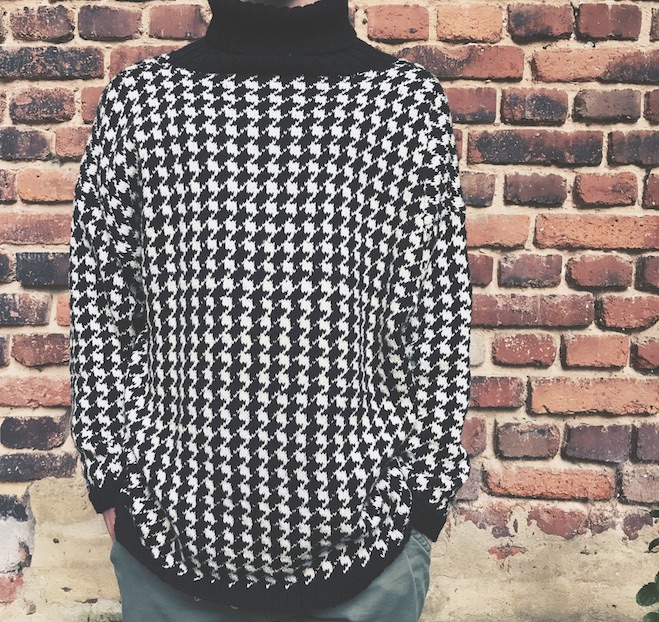

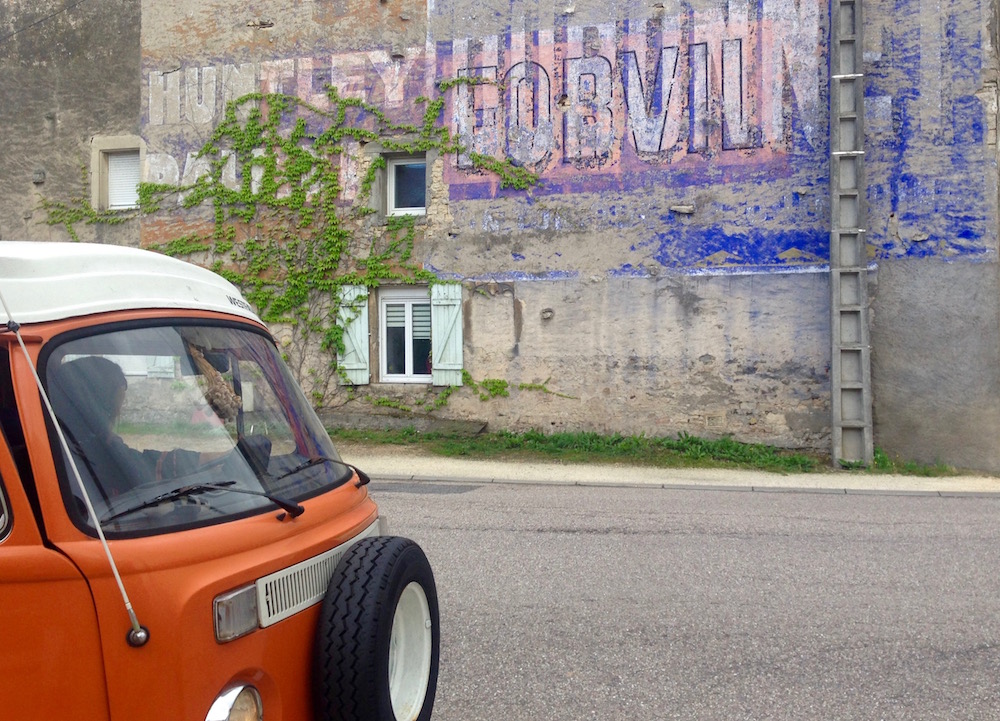
 Old-school navigation. We got lost of Google maps on purpose to get in the slow traveling mood. And to find the small roads we wanted to use.
Old-school navigation. We got lost of Google maps on purpose to get in the slow traveling mood. And to find the small roads we wanted to use.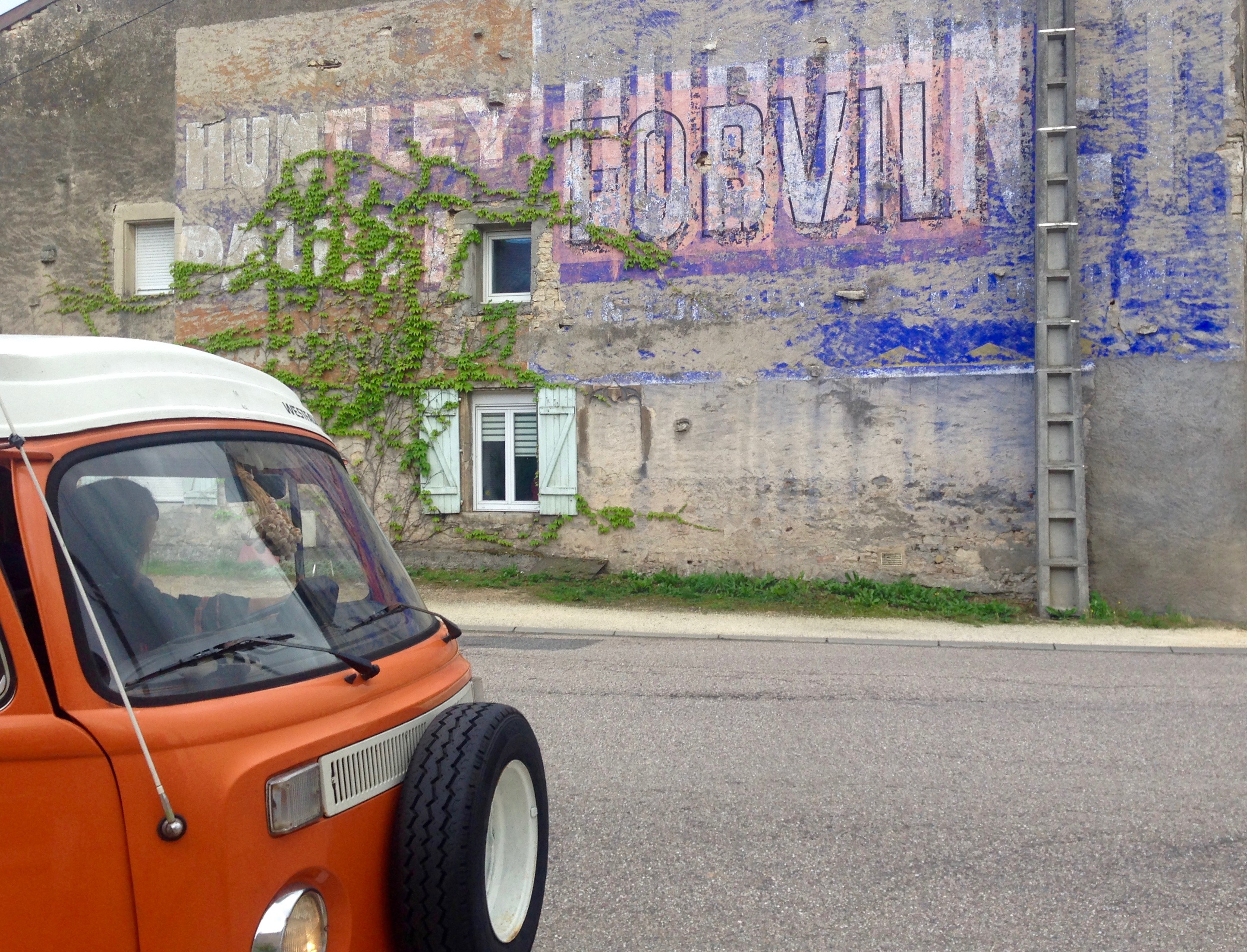 I have a thing for the faded advertisements you still often find in France on the houses like this one in Lorraine. (Note to self: I should take more pics and make a series before they are all gone.)
I have a thing for the faded advertisements you still often find in France on the houses like this one in Lorraine. (Note to self: I should take more pics and make a series before they are all gone.) This is George’s ignition key. Believe it or not. To open the doors you actually have to use the key. There is no remote or central locking. As I said: traveling with George takes time.
This is George’s ignition key. Believe it or not. To open the doors you actually have to use the key. There is no remote or central locking. As I said: traveling with George takes time.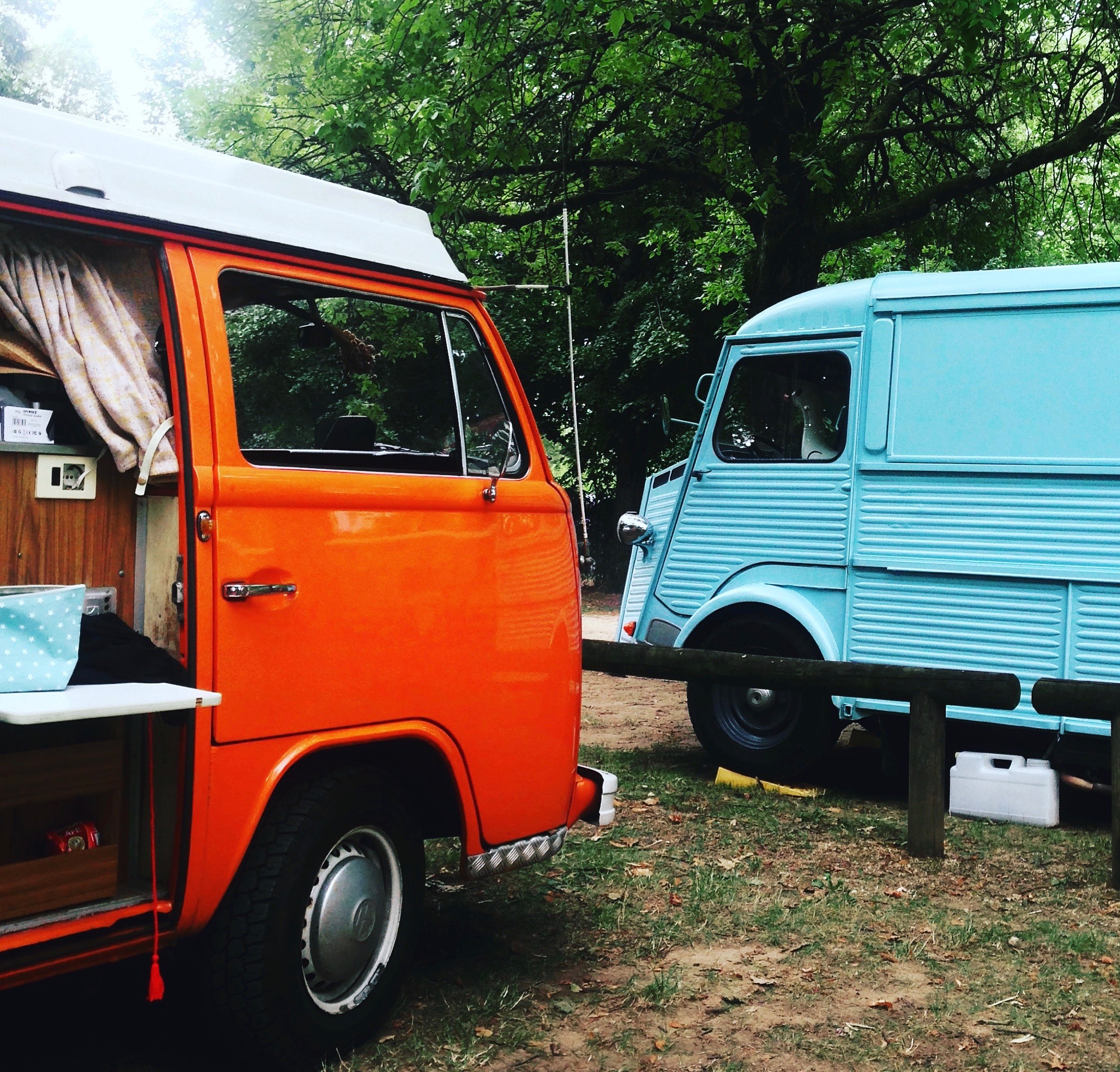 You meet like-minded people everywhere 😉 This is another classic car – a Citroën. Forgive me, I do not know the exact model. If you do, let me know.
You meet like-minded people everywhere 😉 This is another classic car – a Citroën. Forgive me, I do not know the exact model. If you do, let me know.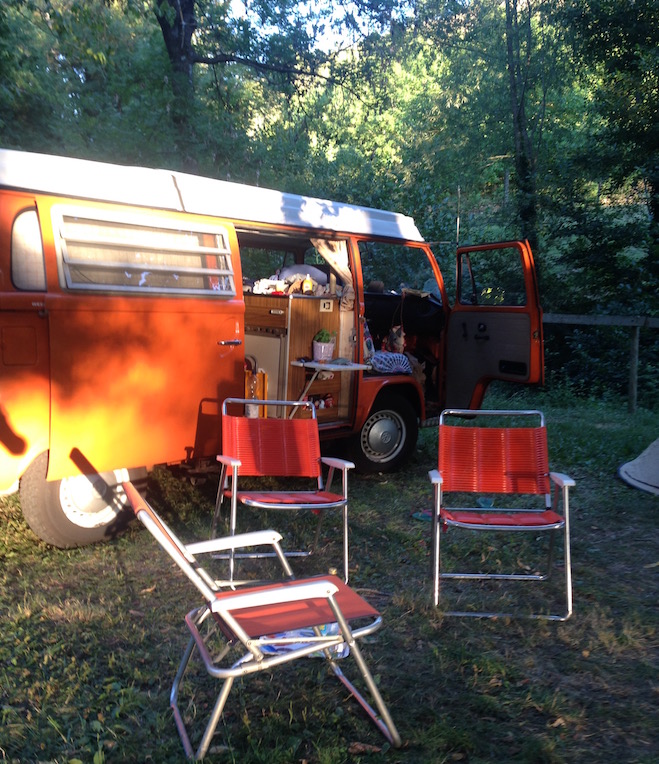
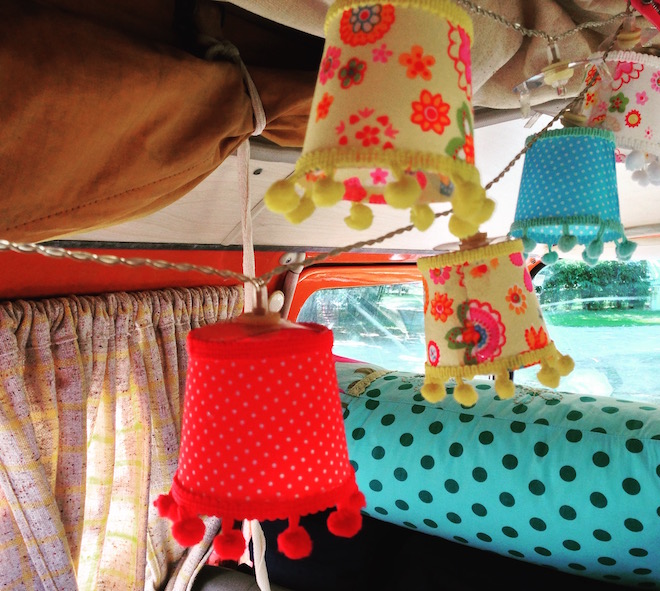
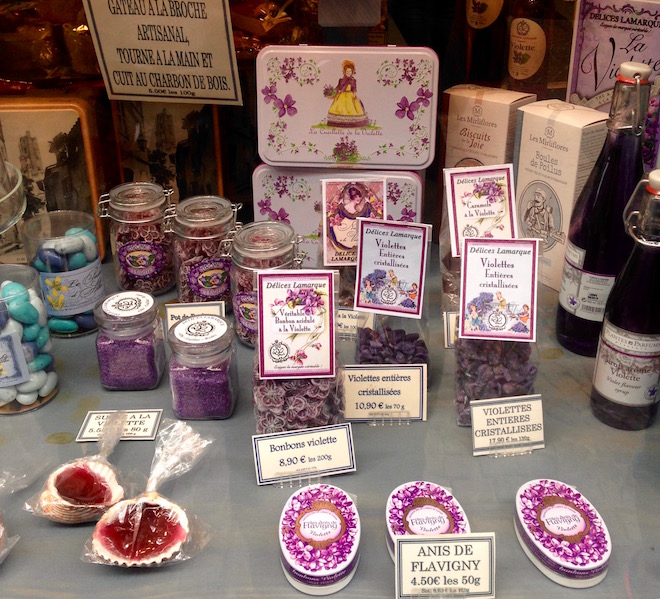
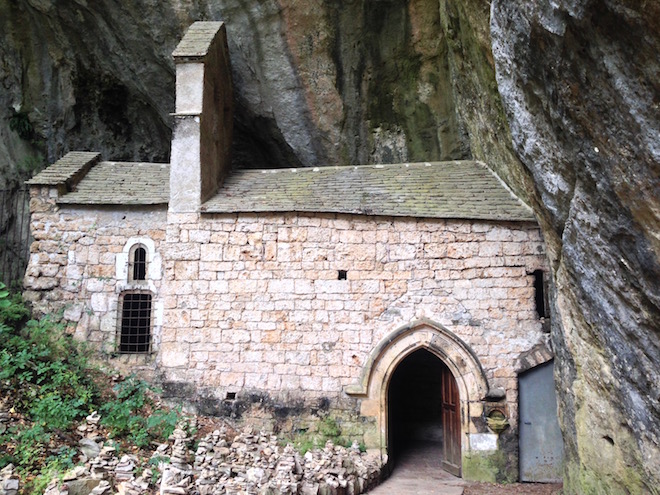
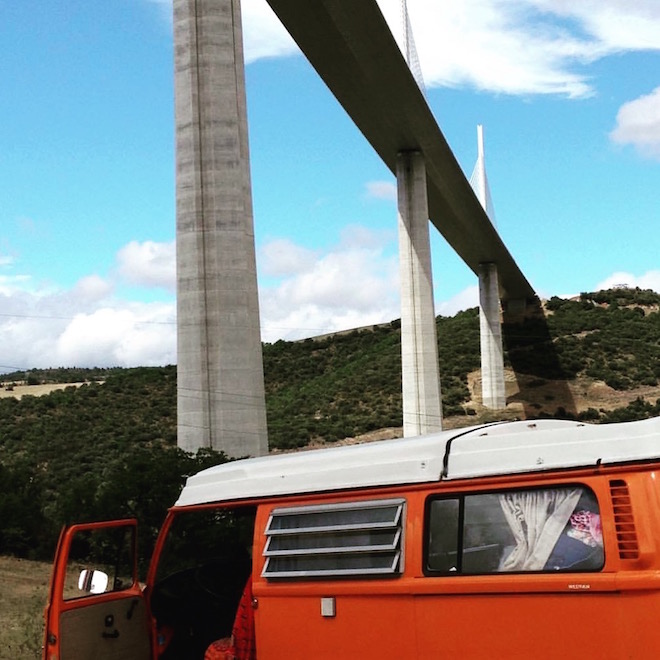
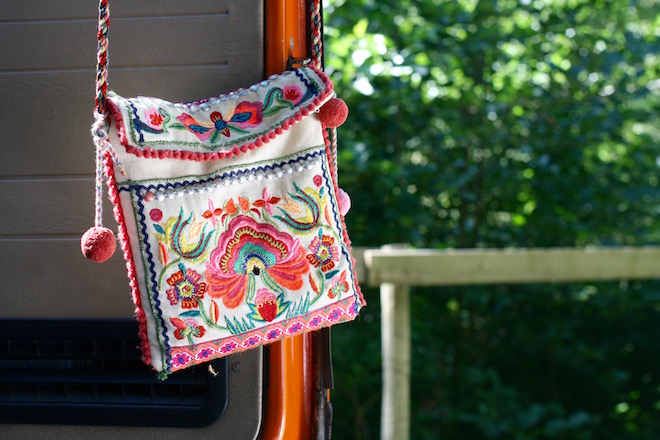
 The obligatory shot through the side mirror. And I really do have the impression that objects are not closer than they appear in a VW T2. Also, the open window is the air conditioning.
The obligatory shot through the side mirror. And I really do have the impression that objects are not closer than they appear in a VW T2. Also, the open window is the air conditioning.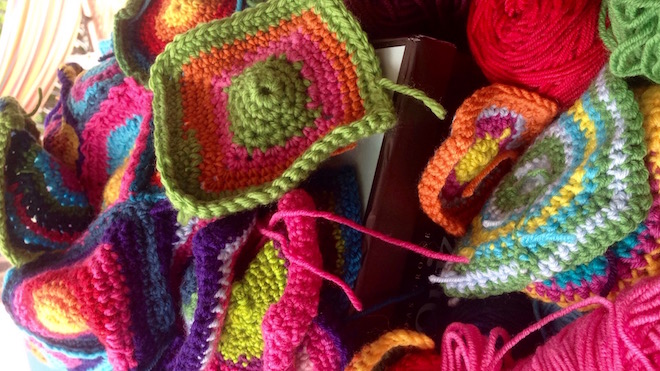 Okay, the last picture in this post is dedicated to the yarnies. Of course, George will get his cozy 70ties granny square blanket. One day. No pressure. We are slow. And we like it.
Okay, the last picture in this post is dedicated to the yarnies. Of course, George will get his cozy 70ties granny square blanket. One day. No pressure. We are slow. And we like it.